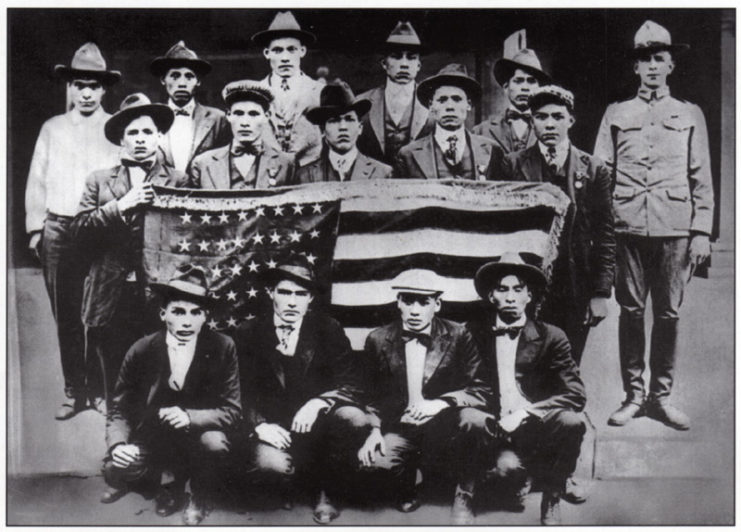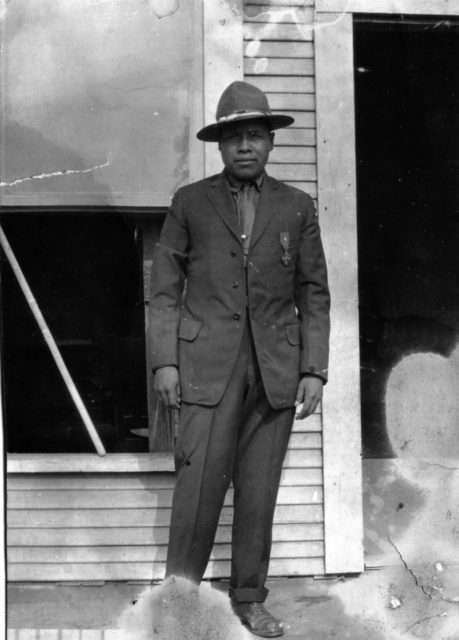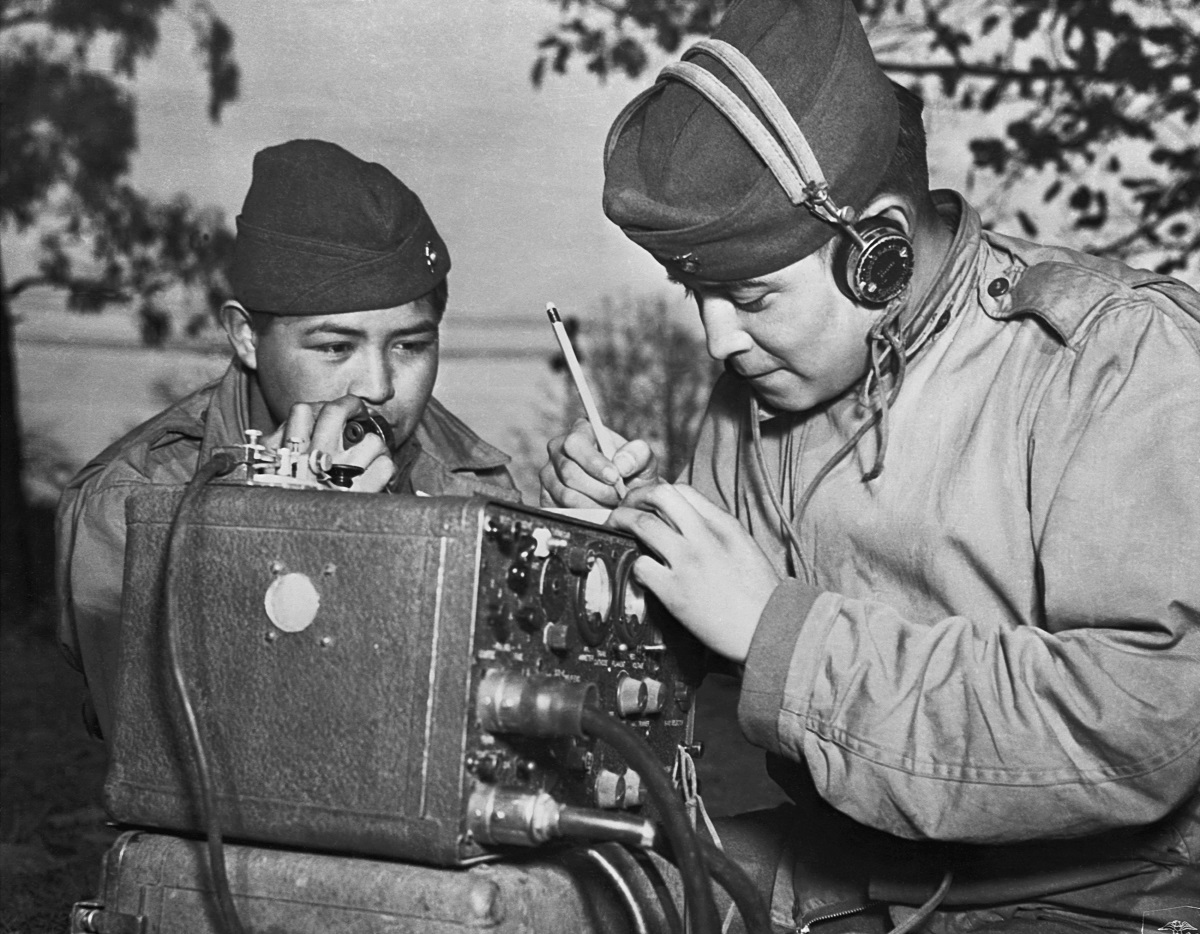To keep their plans a secret from the enemy during the fighting in WWII, the US famously employed Native American code talkers who communicated in their native languages. However, WWII was not the first time Native Americans were employed in this critical role. Their combat debut was actually WWI.
Keeping your communications a secret from the enemy is one of the most important tasks during a conflict. If an enemy can listen in to your communications, they can plan ahead and counter any moves you intend to make.
The development of modern computers received a huge boost during WWII when they were used to decrypt enemy-coded messages. In fact, the world’s first programmable, electronic, digital computer was created for this purpose.
WWI code talkers

Code talkers were used as a tactical means of communicating secret information during battle. They used their knowledge of Native American languages to send coded messages that were unable to be broken by the enemy.
Many peoples have worked as code talkers throughout the two world wars, such as the Meskwaki, Assiniboine, and Mohawk, but the Choctaw and Cherokee really pioneered the practice during WWI.
Choctaw

The government of the Choctaw Nation asserts that the Choctaw were the first Native American code talkers to serve in the US military.
This took place in the 1918 Meuse-Argonne campaign in France. During this battle, the Germans had cracked Allied codes and tapped into their communication lines. Speaking great English, they continuously listened to radio messages. Even sending messages by hand was difficult, as the Germans were capturing on average one in every four runners.
One American officer, Colonel Alfred Wainwright Bloor, devised a clever way to overcome their communicational predicament after overhearing two Choctaw soldiers in his regiment having a conversation in their native language.
He realized he had absolutely no idea what they were saying, and that if he, a born and bred American, couldn’t understand them, then even the best English-speaking German had no chance.
Bloor and a few Choctaw soldiers sent a test code using their native language. The first coded message sent in combat came on October 26, when Bloor ordered the movement of troops from Chufilly to Chardeny. The troops relocated effortlessly, proving the Germans had no idea that such an order had been given.
This was backed up by captured German officers, one of which said they were “completely confused by the Indian language and gained no benefit whatsoever” from listening to the messages.
The trick had worked and the Germans were baffled. Their languages were spoken by very few people, and what was spoken was rarely written down; the Germans simply had no way of deciphering the messages.
Not all military words had a direct counterpart in the Choctaw language, so the code talkers improvised and added new words where necessary. For example “little gun shoot fast” meant machine gun, while corn represented battalions. This on-the-go improvisation made the job of deciphering their messages even harder.
The code talkers helped change the course of the battle, one which the Allies eventually won. Their work in the Great War paved the way for the more well-known Navajo code talkers during WWII.
They fought for a country that didn’t care for them
American Indian code talkers communicating in their language had been critical to Allied victories in Europe, but back home their children were punished for speaking this exact same language in class.
“You had this crazy situation where the Choctaw language was being used as a formidable weapon of war, yet back home children were being beaten at school for using it,” Judy Allen said, the senior executive officer of tribal relations with the Choctaw Nation of Oklahoma.
“The two soldiers who were overheard by the officer probably thought they were in trouble rather than about to provide the answer to the army’s communication problems.”
Less than a generation before 2,500 Choctaw people died after the entire tribe was forced off their ancestral land. But when the US needed them, they answered the call.
American Indian’s fought for a country that didn’t even consider them as citizens. They wouldn’t be granted US citizenship until 1924.
“The Choctaw soldiers were incredibly gracious and willing to share their language. They didn’t have to but they did. They had something unique and were incredibly proud of that.” said Dr. William Meadows of Missouri State University.
American Indians’ courageous and underappreciated work throughout WWI and the wars that followed are examples of pure dedication to their home and their people, and should never be forgotten or overlooked by the United States.
